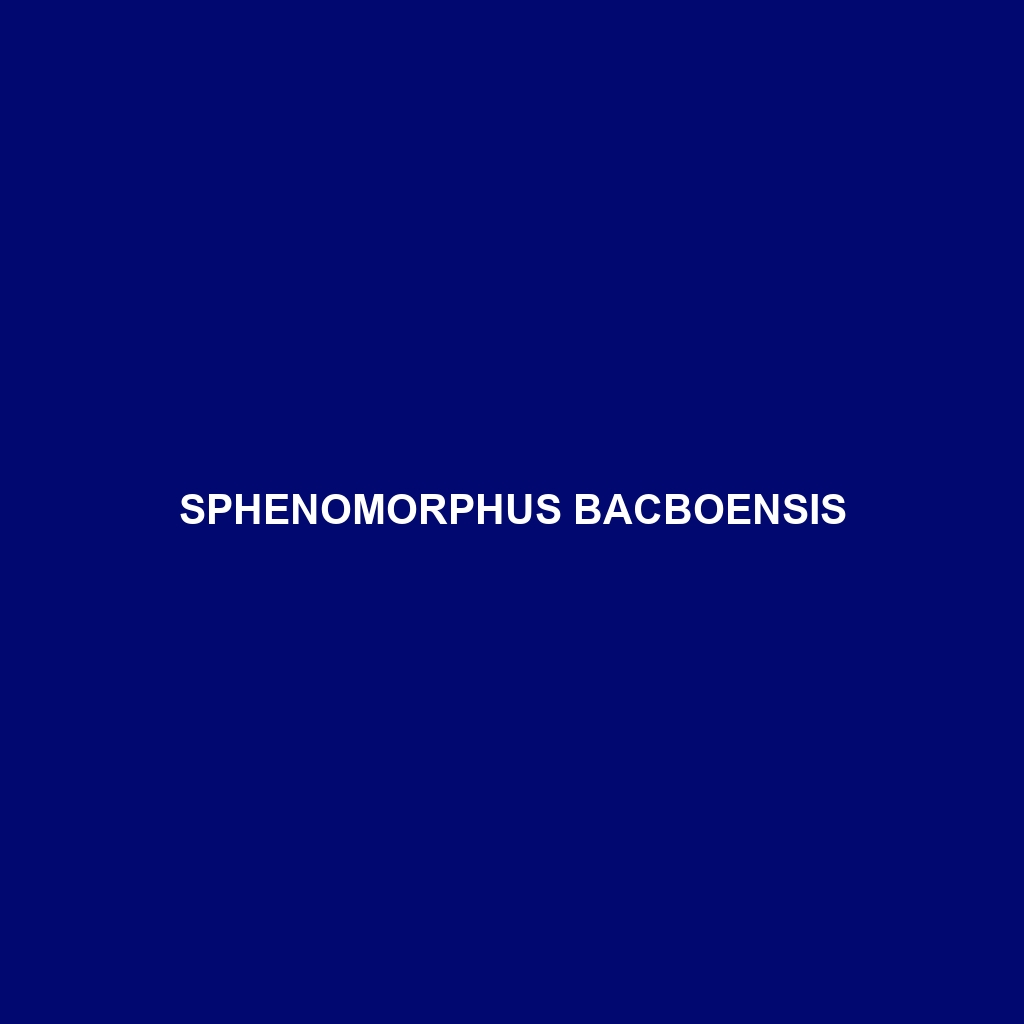<p><b>Sphenomorphus schlegeli</b>, commonly known as Schlegel's skink, is a vibrant insectivorous reptile native to the humid tropical forests of Southeast Asia. With distinctive smooth scales and an agile nature, this skink plays a vital role in its ecosystem by regulating insect populations and serving as prey for larger animals.</p> </div>
Tag: insectivore reptiles
Sphenomorphus sabanus
The Sphenomorphus sabanus, a slender lizard native to the tropical rainforests of Southeast Asia, showcases a fascinating blend of deep brown and olive green hues, reaching lengths of 10-15 cm. Known for its impressive climbing abilities and insectivorous diet, this species plays a vital role in ecosystem balance while exhibiting unique behaviors during its mating rituals.
Sphenomorphus multisquamatus
The Sphenomorphus multisquamatus, or Multiscale Skink, is a slender, 15-25 cm long reptile native to the rainforests of Southeast Asia, recognizable by its smooth, shiny scales and striking camouflage. This diurnal insectivore plays a vital role in controlling insect populations, while its vulnerable conservation status highlights the threats posed by habitat loss and deforestation.
Sphenomorphus maindroni
<b>Sphenomorphus maindroni</b>, commonly known as Maindron's skink, is a medium-sized, diurnal insectivore found in the tropical rainforests of Southeast Asia, characterized by its smooth, shiny scales and distinctive bright blue tongue. This skink plays a crucial role in controlling insect populations and serves as an important prey species in its ecosystem.
Sphenomorphus indicus
The Indian skink (<i>Sphenomorphus indicus</i>) is a medium-sized lizard ranging from 15 to 30 cm, known for its slender body, smooth scales, and impressive camouflage abilities. Found in diverse habitats across Southeast Asia and the Indian subcontinent, it plays a crucial ecological role as an insectivore and contributes to soil aeration through its burrowing behavior.
Sphenomorphus diwata
The Sphenomorphus diwata, known as the Diwata skink, is a medium-sized, diurnal skink found in the rainforests of the Philippines, particularly Mindanao. This vibrant insectivore plays a vital role in its ecosystem by controlling insect populations and serving as prey for larger predators.
Sphenomorphus cyanolaemus
<p><b>Sphenomorphus cyanolaemus</b>, commonly known as the Blue-Winged Skink, is a vibrant insectivore native to tropical rainforests, characterized by its striking blue coloration and agile movements. This unique species thrives in humid environments, helping to regulate insect populations while playing a crucial role in its ecosystem.</p>
Sphenomorphus cranei
Discover the vibrant <b>Sphenomorphus cranei</b>, a striking lizard native to the rainforests of Southeast Asia. Known for its unique coloration, agile behavior, and vital role in regulating insect populations, this species thrives in humid environments and is a fascinating example of rainforest biodiversity.
Sphenomorphus bacboensis
<p><b>Sphenomorphus bacboensis</b>, or the Bac Bo skink, is a slender, agile skink inhabiting the rainforests of northern Vietnam. This insectivorous species, notable for its vibrant color patterns and unique behaviors, plays a crucial ecological role in controlling insect populations and serving as prey in its habitat.</p>
Sphenomorphus annectens
<p><b>Sphenomorphus annectens</b>, commonly known as the Sundarban Skink, is a moderately sized insectivorous skink found in Southeast Asia's tropical rainforests and mangrove ecosystems. This agile, diurnal species is recognized for its vibrant coloration, rapid movement, and significant role in controlling pest populations within its habitat.</p>









